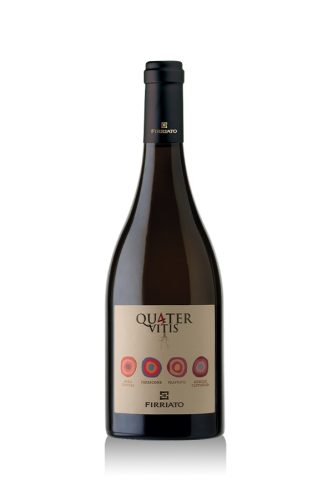Tasting the refined wines of Sicily today, you’d never guess that until recently, a significant amount of the grapes grown on this Italian island ended up as bulk wines, sometimes secretly blended into the wines of other European countries.
In the past, basic wines from Sicily were used to enhance the color and strength of red wines in France, northern Italy and elsewhere. Even after it was no longer strictly legal, this practice apparently remained in existence. It was kind of an open secret in the wine world.
The Sicilian red grape perricone was one of those bulk wine grapes. However, now, perricone is claiming its place as a native wine of Sicily, cultivated mainly on the western part of the island. Perricone wines are intense red colors, with aromas and flavors reminiscent of strawberries, raspberries and other red fresh red fruits, dried plums and berries. They carry hints of tangy Sicilian herbs, along with structure and tannins that can be tamed but also allow the wine to age well.
On my recent trip to Sicily, I discovered at least a dozen wineries that now make Perricone wine. And yes, you can find Sicilian Perricone wines in the US now, as well as in Europe. Try WineSearcher.com for locations in your state or country because it’s fascinating to taste a modernized version of this old Sicilian classic.
Perricone was originally brought to Sicily thousands of years ago by the Greeks who needed more wine to supply the growing population of their empire; the Romans continued this practice for centuries. Much later, perricone was made into the very popular Marsala Rosso fortified wine, which reigned from the late 1700s through the 1800s. Then, various diseases decimated Sicilian vineyards in the late 19th and early 20th centuries. When it came to replanting, perricone fell out of favor because it is a late-ripening grape, not the easiest to handle, and grows best only in the western sections of the island which have clayey soil.
 One of the most important producers on Sicily, Count Giuseppe Tasca d’Almerita, initiated a modern revival as early as 1959 when he planted perricone to make a blended wine called Rosso del Conte – “The Count’s Red Wine” – an iconic wine, still produced at the family’s Tenuta Regaleali estate.
One of the most important producers on Sicily, Count Giuseppe Tasca d’Almerita, initiated a modern revival as early as 1959 when he planted perricone to make a blended wine called Rosso del Conte – “The Count’s Red Wine” – an iconic wine, still produced at the family’s Tenuta Regaleali estate.
At the carbon-neutral Firriato winery, the Di Gaetano family continued the revival when they planted perricone about twenty years ago. These grapes are grown in traditional vineyards surrounded by wheatfields and olive groves.

A current major Marsala producer, Pellegrino, now also makes a dry wine called Capoarso from perricone grapes grown not far from the sea. Further inland, the Feudo Montoni winery uses perricone in their blended Passito Rosso; passito is a time-honored sweet wine made with dried grapes.
And there’s another, organic perricone wine I’d like to mention: Vomere d’Oro, which means “golden ploughshare”. Produced by Candido, the wine’s name echoes the winery’s commitment to honoring the rural traditions of their land. The 2021 Perricone I sampled had earthy, blackberry flavors and fine-grained tannins. Candido’s 100% organic wines are just starting to appear in the US.
The lovely Vincenza Candido, whose father established the winery in 2002, recommends serving this wine with meats and cheeses – a good focus for other Perricone wines, as well.
![]()
